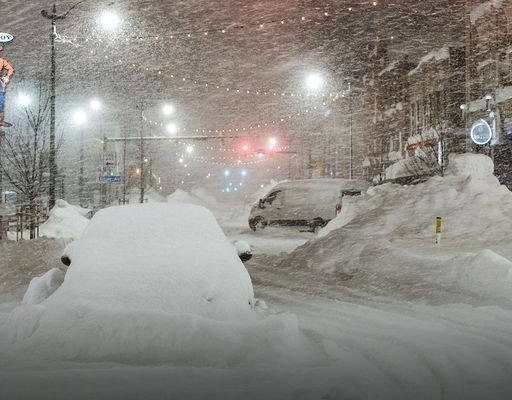
This weather event, originating from Siberia, is expected to impact temperatures nationwide significantly.
The first Arctic outbreak of the season is set to sweep across the US during Thanksgiving, bringing freezing temperatures and potential snowfall.

A woman walks by the Washington statue in the Public Garden the morning after a massive winter storm in Boston, Massachusetts, on January 5, 2018 | Source: Getty Images
A blast of Arctic air from Siberia will mark the first major cold snap of the season starting this last week of November 2024. Weather Track US shared on X that forecasts show approaching Arctic air mass will cause temperatures to plummet as much as 25°F below seasonal averages in some areas.
Most of the continental US will see temperatures at least 10°F lower than usual, making for a chilly Thanksgiving holiday.
Regions near the Great Lakes and the Northeast should prepare for snow, while freezing temperatures are likely to reach southern areas, including the Gulf Coast and parts of the Southwest.
The National Weather Services confirmed these details, writing on X, “Dangerous wind chills across the Upper Midwest and heavy snows downwind of the Great Lakes will accompany this wintry blast.”
Arctic outbreaks can have widespread and severe consequences. These intense cold air masses may cause unprotected pipes to freeze and burst, leading to costly water damage. Shallow estuaries often experience large fish kills due to the sudden drop in temperatures.
Agriculture can suffer significant losses, particularly for citrus trees, tropical plants, and seasonal crops like strawberries.

Snow falls on corn plants at a field in Princeton, Illinois, on October 30, 2019 | Source: Getty Images
Additionally, the improper use of heating devices during these cold spells can lead to structural fires. Inadequate ventilation of fuel-based heaters also poses a serious risk of carbon monoxide poisoning.
Furthermore, the economic impact of Arctic outbreaks in areas like the Gulf Coast can rival that of a Category One hurricane, affecting infrastructure, livelihoods, and ecosystems.

Mount Rainier and Tipsoo Lake covered in snow in winter, Mount Rainier National Park in Washington, on June 13, 2019 | Source: Getty Images
Therefore, the National Weather Service Southern Region advised having multiple means of receiving weather alerts during the Arctic outbreak, which is expected to last through Monday, December 2, 2024.
They also suggested carrying a NOAA weather radio alongside Thanksgiving preparations to ensure everyone stays informed about potential weather hazards.
However, the forecast already shows that Thanksgiving Day will be wet in most of the East. The Northeast and New England might have snow while the Southeast looks at possible strong thunderstorms.
On November 29 and 30, travel may be affected due to snowfall across certain parts of the Central US. Post-Thanksgiving travel may also be affected due to the Arctic cold break in some areas of the Central and Southern US. The heavy lake effect snow downwind of the Great Lakes could also affect traveling after Thanksgiving.
As per a shared map, from November 27 to December 1, 10 states, including Louisiana, Mississippi, Alabama, Florida, Georgia, South Carolina, North Carolina, Tennessee, Kentucky, and Virginia will specifically face unseasonably cold conditions, with freezing lows, snow, and mixed precipitations.
Other specifics shared on the map are that Missouri will experience hazardous cold from November 30 to December 4. On the same dates, Houston will experience frost and freeze while Detroit will have heavy snow.
With rainy, cold, and snowy weather anticipated during some of the year’s busiest travel days, drivers are urged to plan for extra travel time and stay vigilant as weather and traffic conditions may shift unexpectedly. This is especially necessary in the 10 mentioned states.
In these states, rain combined with locally dense fog is expected to create wet roads and reduced visibility, heightening the risk of delays and accidents. The situation is further compounded by increased holiday traffic, making caution and preparedness essential for safe travel.

Vehicles drive as snow falls north of Lake Tahoe in the Sierra Nevada mountains during a powerful winter storm in Truckee, California, on March 1, 2024 | Source: Getty Images
Stacey Barber, the Vice President of the American Automobile Association (AAA) has said, “Thanksgiving is the busiest holiday for travel, and this year we’re expecting to set new records across the board, from driving to flying and cruising.
AAA estimates that approximately 79.9 million people will travel 50 miles or more from their homes during the Thanksgiving holiday period.

An American Eagle plane taxis during a snow storm at Seattle-Tacoma International Airport (SEA) in Seattle, Washington, on December 20, 2022 | Source: Getty Images
Given these hazards, whether one is traveling or staying home this Thanksgiving, it’s important to remain vigilant and celebrate cautiously to ensure safety for all.





